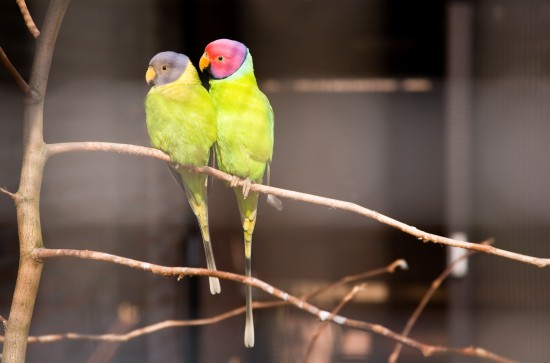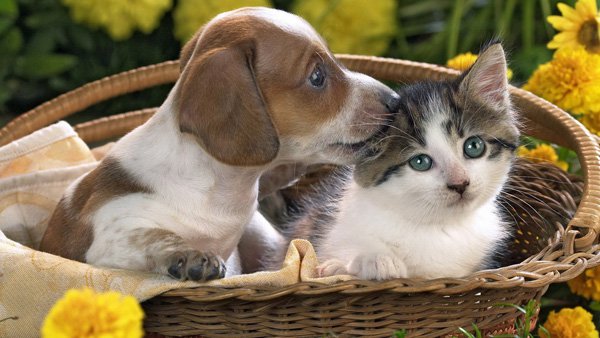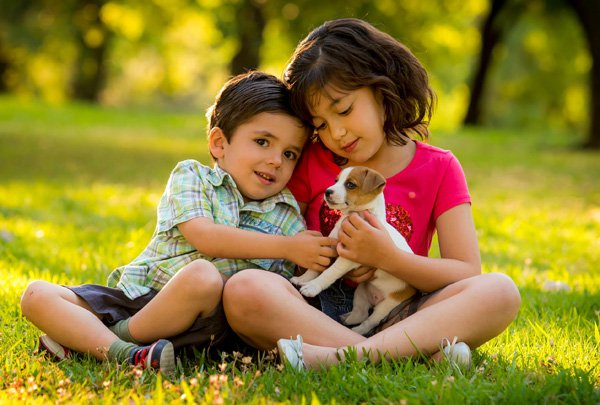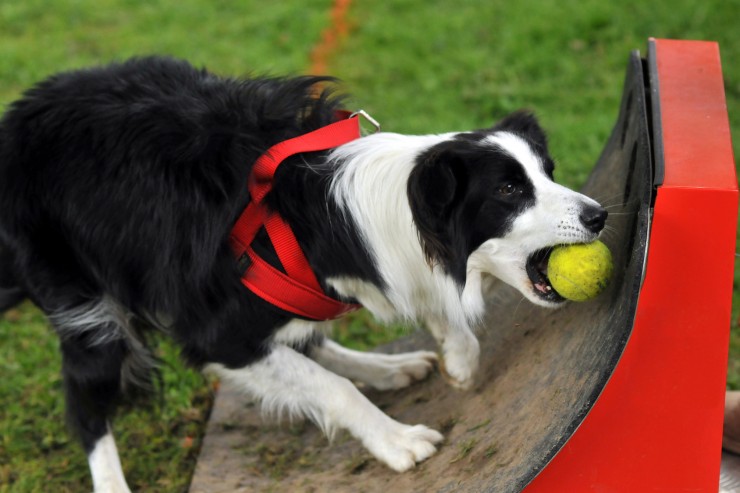

The Plum headed Parakeet (Psittacula cyanocephala) is a bird that comes from the Indian subcontinent where it lives in flocks. They tend to be found in forests and open woodland from the foot of the Himalaya Mountains right down to Sri Lanka though not in the driest areas of western India.
These birds are around 33cm in length, with around two thirds of this being made up of their tail. They are sexually dimorphic with the male have a red head that changes to purple towards the back of the head while the female’s head is bluish-grey colour. The male has a thin black band of feathers along the back of the neck edged in green and this is yellow on the female with no black feathers. The rest of the body on both birds are yellow-green underneath and darker green on the back and wings with green turning to blue tail feathers.
Typical lifespan in the wild is 15-20 years but in captivity, they have been known to live to 30 years and beyond.
In the natural environment, these birds live in large flocks but it has been found in captivity, perhaps due to space restrictions, they are happy as a group outside breeding season but can be aggressive when breeding. Therefore, it is best to keep a single pair to an enclosure unless you can separate them off during breeding.
They can live in an indoor or outdoor aviary or in a large cage. If they are living outdoors they should have a frost-free protected night house to roost as, while relatively hardy, should be protected from the very worst of the weather. If you keep your bird or birds in a cage then they will need plenty of time out of the cage, as these are very active birds. A recommended amount is 3-4 hours a day in a bird-proofed area though they should be supervised as it is surprising what trouble they can get themselves in to. Therefore these birds should be considered as relatively time consuming as pets.
Temperament-wise, these birds are described as gentle, affectionate with their human owners, and very sociable. They don’t make a lot of noise, compared with other parakeets so can be suitable for people living in apartments, or similar. These birds are surprisingly pleasant singers, unlike many parakeet species and their song is described as melodic. They have some ability to mimic voices with the males being the better at this but don’t usually start talking until around 6-8 months of age.
If they are hand reared, these birds will bond strongly with their owner and will retain this if handled daily. However, it should be noted that these are one of the species that go through a bluffing phase, a little like a teenage phase in humans, where they will test the boundaries of their world and can be quite naughty. This is merely a phase and is related to hormonal changes in the bird’s body, having no relevance to their personality when through it.
While generally very sociable, they are cautious around strangers and will shy away from them. Introducing them to new people should be done gradually and they should be offered treats to win them over.
While enjoying a good chew, these parakeets aren’t high on the list of the most destructive species. They will enjoy chewing toys or a willow branch or twigs.
These birds will thrive on a good quality large parakeet mixture as well as green food and some fruit. They will also enjoy sprouted seed and millet as well as proteins such as egg food.
They do not tend to eat from the floor of their cage so any food that falls to the floor should be removed or it will spoil.
Favoured foods include fruits such as grapes, oranges, bananas and melons and vegetables such as broccoli, carrots, peas and cauliflower as well as greens such as spinach and kale. Cooked beans are another good source of nutrients for plum heads so a bean soup mix boiled for 15 minutes then cooled and served without any seasoning will often be enjoyed. Similarly, cooked pasta is a good source of carbohydrates for the birds. Wholegrain breads are a great source of fibre and can be given in small amounts as well as cereals and grains such as oats or shredded wheat.
When breeding in the wild, the breeding season is from February through to May and then against in August and September when the birds use a tree cavity or a building nook to nest. Normally found in flocks, they separate into smaller groups of five to ten parrots then the pairs will leave for the nesting area alone.
In captivity, Plum heads will use a wooden nest box or a hollowed out tree stump that is around 25cm in diameter and have a height of around 40-50cm. They need an entrance hole around 7cm wide and, if outdoors, it is best to hang the nest box in the night house. While they don’t build in the nest box, they will add peat moss or small pieces of rotten wood to the bottom.
When the birds are nesting, avoid inspecting the nest very often and give them as much peace and solitude as possible as the species has a history of abandoning nests if disturbed.
Up to five eggs are laid with the female doing the incubation for around 22-24 days. The young fledge at six weeks of age and are fed by the male bird for a few weeks further. It can take 1 ½ to 2 years to get their adult plumage and it is best not to breed them until they have this.
These stunning birds make great pets though can go through an awkward adolescent period that means having some experience with this type of parakeet is advisable. They do need time out of their cage but aren’t as noisy as some similar sized species and are easy to feed and to breed if you have the room for a pair.
 Getting Your Dog Comfortable Around Water
Getting Your Dog
Getting Your Dog Comfortable Around Water
Getting Your Dog
 5 Steps for Choosing a Veterinarian
5 Steps for Choosing a Veterinarian
For most A
5 Steps for Choosing a Veterinarian
5 Steps for Choosing a Veterinarian
For most A
 How to take into account creating the best quality Horse fence?
How to take into account creating the best quality Horse f
How to take into account creating the best quality Horse fence?
How to take into account creating the best quality Horse f
 Things You Need To Know Before Building a Custom Made Chicken Coop
Things You Need To Know Before Building a Custom Made Chic
Things You Need To Know Before Building a Custom Made Chicken Coop
Things You Need To Know Before Building a Custom Made Chic
 Teaching Your Dog The Basics Of Flyball
Teaching Your Dog
Teaching Your Dog The Basics Of Flyball
Teaching Your Dog
Copyright © 2005-2016 Pet Information All Rights Reserved
Contact us: www162date@outlook.com